From Agros to Zygi
November 10, 2015 by Scran | 0 comments
On the road again in Cyprus, so what did we do with Archnetwork today ?
S aturday 19th September 2015. After such a full day in the capital, we stayed local and visited the neighbouring village of Kato Drys. Firstly, we went to the top of Sotira hill, behind Lefkara to get panoramic view across the Larnaca District and surrounding landscape and visited the tiny church perched there. It had some charming icons dating from the early C20th.
aturday 19th September 2015. After such a full day in the capital, we stayed local and visited the neighbouring village of Kato Drys. Firstly, we went to the top of Sotira hill, behind Lefkara to get panoramic view across the Larnaca District and surrounding landscape and visited the tiny church perched there. It had some charming icons dating from the early C20th.
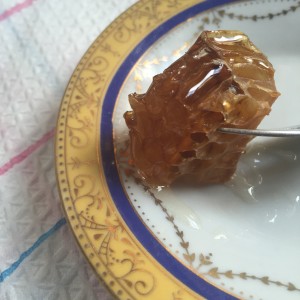
Next stop was by an ancient oak and some knarly, old olive trees. We heard from Martin some local folklore about village rivalry & how the village took its name from the many “Dryes” (oaks) that grew in the area. Martin also informed us about community efforts to sew acorns & regenerate some of these magnificent trees.
We had the pleasure of visiting house of Elli Papachristoforou, who generously let us sample some of her honey which was rather special. She then gave us a guided tour of both the (Embroidery) Museum of Folk Art and the (Bee) Agricultural Museum of Kato Drys. Both were captivating and provided further context for everything we had learned over the previous days in respect of Cypriot culture, nature, social & economic growth. The homestead of Reo Stakis was pointed out to us, the famous son of the village who built the Stakis Hotels empire.
* * *
Sunday 20th September 2015. In the capable hands of our host for the day, Adriana Patkova, we wove our way through the twisty mountain roads of Cyprus, spotting beehives, bikers, wind turbines, reservoirs, solar farms, eucalyptus trees, terraces & an asbestos mine.

I took issue with the interpretation on site, there was the distinct lack of information about the hazards of asbestos & the effects on the nearby mining villages as clearly studied in here.  Report on the Health Effects of the Asbestos Mines on the … Some advice for visitors poking around in the rocks would not go amiss. Contaminated land from historical mining in Cyprus is an issue. The Amiantos Asbestos Mine in the Troodos National Park, where we stopped is undergoing restoration. The biodiversity conservation, restoration and management project concludes at the end of December 2015.
Report on the Health Effects of the Asbestos Mines on the … Some advice for visitors poking around in the rocks would not go amiss. Contaminated land from historical mining in Cyprus is an issue. The Amiantos Asbestos Mine in the Troodos National Park, where we stopped is undergoing restoration. The biodiversity conservation, restoration and management project concludes at the end of December 2015.
Moving on.  We arrived at picturesque Agros where we visited a smokery, had a peek into the smoking room at Kafkalia and sampled their products; posirti, lountza, loukanika, hiromeri, zalatina, tsamarelle and pastourmas. After lunch we continued to climb to the top, reaching Troodos Square we couldn’t help but notice the familiar environment, it looked like Scotland! There was a thistle to prove it. The British military presence was again, all around. We went to the rather dated visitor centre and proceeded to Pano Platres where we saw a peculiar post box. Finally we had a long drive, down to the coast and back to Lefkara with a pit stop in Zygi.
We arrived at picturesque Agros where we visited a smokery, had a peek into the smoking room at Kafkalia and sampled their products; posirti, lountza, loukanika, hiromeri, zalatina, tsamarelle and pastourmas. After lunch we continued to climb to the top, reaching Troodos Square we couldn’t help but notice the familiar environment, it looked like Scotland! There was a thistle to prove it. The British military presence was again, all around. We went to the rather dated visitor centre and proceeded to Pano Platres where we saw a peculiar post box. Finally we had a long drive, down to the coast and back to Lefkara with a pit stop in Zygi.
Silversmithing & Stansted
Monday 21st September, our final day.  We made an early morning visit to the silversmiths in Lefkara and learned about their processes, which are mostly mechanised but involved all sorts of materials, rubber, wax, plaster and of course silver. The workshops were very interesting but we could not linger. Adriana had to get us to the airport for our incredible journey home to Glasgow, via Stansted. I’m glad to say on our way to Paphos she took us to see Aphrodite’s Rock, the ideal way to say goodbye & ευχαριστώ
We made an early morning visit to the silversmiths in Lefkara and learned about their processes, which are mostly mechanised but involved all sorts of materials, rubber, wax, plaster and of course silver. The workshops were very interesting but we could not linger. Adriana had to get us to the airport for our incredible journey home to Glasgow, via Stansted. I’m glad to say on our way to Paphos she took us to see Aphrodite’s Rock, the ideal way to say goodbye & ευχαριστώ
The experiences of this week were fascinating. From knowing very little about Cyprus I now feel after this cultural exchange that I have gained a decent understanding of Cypriot life, both contemporary and traditional.
Everybody we encountered was genuinely friendly & extremely welcoming. I found more personal parallels with the socio-political divide in the country than I expected. The cuisine was fabulous, the crafts exquisite, the landscape so dry and different & the company… well, we had a lot of fun too.
Imagery © Newsquest, Licensor Scran & J.Sangster

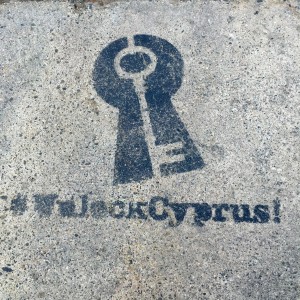 earing the capital city of Cyprus I was surprised to see a giant Turkish Cypriot flag painted onto the side of the Kyrenia Mountains – what a statement. Following the conflict of 1974, the Turkish Republic of Northern Cyprus TRNC became a self-declared state, however it is only recognised by Turkey. The political and military dispute in Cyprus remains unresolved and the island continues with life, divided. The Green Line runs 112 miles from east to west across the island, splitting families, property and communities.
earing the capital city of Cyprus I was surprised to see a giant Turkish Cypriot flag painted onto the side of the Kyrenia Mountains – what a statement. Following the conflict of 1974, the Turkish Republic of Northern Cyprus TRNC became a self-declared state, however it is only recognised by Turkey. The political and military dispute in Cyprus remains unresolved and the island continues with life, divided. The Green Line runs 112 miles from east to west across the island, splitting families, property and communities.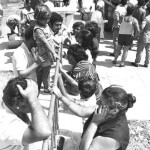
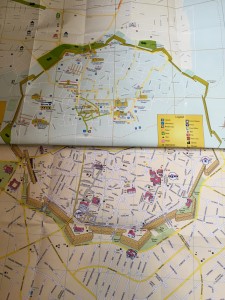 Nicosia is a vibrant & sophisticated city, with a buzz in the streets. Trendy shops & coffee houses lined the artists’ quarter. After a little pick-me-up in the form of some Cyprus coffee, μέτριο for me please, we neared the Green Line. Passports at the ready we crossed over to the north side of the city through two sets of border control, Greek & Turkish. It was easy enough the pass through, plenty of tourists and locals alike were going to & fro. Yet, CCTV was evident, uniformed armed guards were on duty & signage warned us that photography was strictly forbidden in this narrow
Nicosia is a vibrant & sophisticated city, with a buzz in the streets. Trendy shops & coffee houses lined the artists’ quarter. After a little pick-me-up in the form of some Cyprus coffee, μέτριο for me please, we neared the Green Line. Passports at the ready we crossed over to the north side of the city through two sets of border control, Greek & Turkish. It was easy enough the pass through, plenty of tourists and locals alike were going to & fro. Yet, CCTV was evident, uniformed armed guards were on duty & signage warned us that photography was strictly forbidden in this narrow


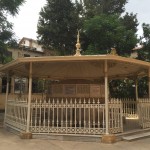
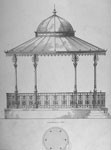
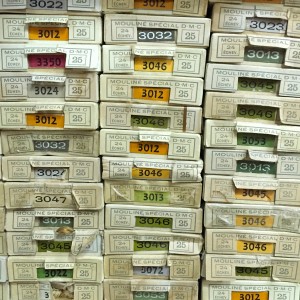 Not only is she a successful businesswoman, but Senaye also works on bi-communal projects, using craft to bring together Cypriots from both sides of the divide and trains up young apprentices too. Thereby generating hope for the future and breaking down barriers. Later we visited the amazing Yagcioglu haberdashery, which stocked the all-important
Not only is she a successful businesswoman, but Senaye also works on bi-communal projects, using craft to bring together Cypriots from both sides of the divide and trains up young apprentices too. Thereby generating hope for the future and breaking down barriers. Later we visited the amazing Yagcioglu haberdashery, which stocked the all-important 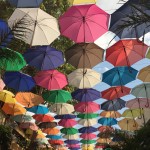

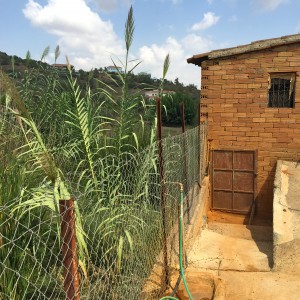

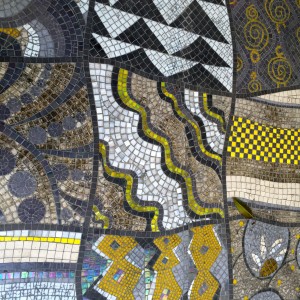
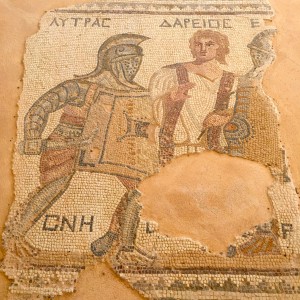
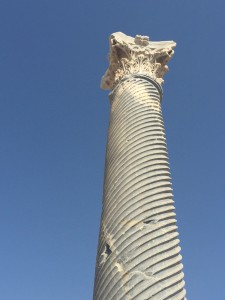
 Tuesday 15th September 2015. Our all-female, party of five had travelled from Scotland. The group consisted of heritage & education professionals with definite interests museum practice, interpretation, learning and community engagement. Although, through the week other interests & skills would surface as we got to know each other.
Tuesday 15th September 2015. Our all-female, party of five had travelled from Scotland. The group consisted of heritage & education professionals with definite interests museum practice, interpretation, learning and community engagement. Although, through the week other interests & skills would surface as we got to know each other.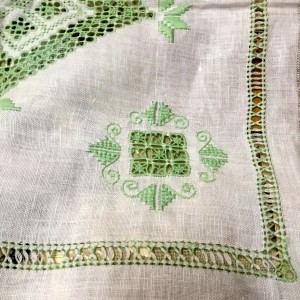 The village & surrounding area is renowned for it’s lace making, so much so, in 2009 it was recognised by UNESCO. Lefkara laces or Lefkaritika was added to the list of the
The village & surrounding area is renowned for it’s lace making, so much so, in 2009 it was recognised by UNESCO. Lefkara laces or Lefkaritika was added to the list of the  Here we were welcomed with some homemade traditional lemonade & shown a wealth of Lefkaritika as well as locally made silver jewellery. I had not seen the lace in reality before and there was no doubt that Lefkaritika was indeed beautiful. The pieces on offer were mostly traditional & could be considered old fashioned by some, however the lace is labour intensive to produce and requires years of skill to become a proficient maker. The lace makers of Lefkara are traditionally women, who learn the art from their mothers & grandmothers. Sadly this knowledge of applying cotton thread to linen is being lost as the population shifts away from Lefkara and other socio-economic pressures increase on Cypriot life.
Here we were welcomed with some homemade traditional lemonade & shown a wealth of Lefkaritika as well as locally made silver jewellery. I had not seen the lace in reality before and there was no doubt that Lefkaritika was indeed beautiful. The pieces on offer were mostly traditional & could be considered old fashioned by some, however the lace is labour intensive to produce and requires years of skill to become a proficient maker. The lace makers of Lefkara are traditionally women, who learn the art from their mothers & grandmothers. Sadly this knowledge of applying cotton thread to linen is being lost as the population shifts away from Lefkara and other socio-economic pressures increase on Cypriot life.
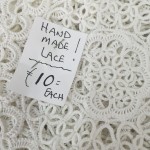
 aware of the power and impact of certain colour schemes. We were informed the homes with blue doors, shutters & window frames, were those of Greek Cypriots whereas the homes with green paintwork, were those of Turkish Cypriots, some of which were unoccupied. In the same vein, many doors had knockers in the shape of a woman’s hand. These would be referred to as the hand of Mary or the hand of Fatima depending on whether it was a Greek Cypriot Christian or Turkish Cypriot Muslim home respectively. Amongst the numerous Greek Orthodox churches in Lefkara we visited the impressive & ornate 14th Century Timios Stavros church. Further down the hill we also admired the derelict, but well maintained, mosque. It quickly became apparent to me that impact of history, politics and conflict was visible everywhere. As a visitor it was plain to see Lefkara is one village, with two distinct communities linked through many common threads.
aware of the power and impact of certain colour schemes. We were informed the homes with blue doors, shutters & window frames, were those of Greek Cypriots whereas the homes with green paintwork, were those of Turkish Cypriots, some of which were unoccupied. In the same vein, many doors had knockers in the shape of a woman’s hand. These would be referred to as the hand of Mary or the hand of Fatima depending on whether it was a Greek Cypriot Christian or Turkish Cypriot Muslim home respectively. Amongst the numerous Greek Orthodox churches in Lefkara we visited the impressive & ornate 14th Century Timios Stavros church. Further down the hill we also admired the derelict, but well maintained, mosque. It quickly became apparent to me that impact of history, politics and conflict was visible everywhere. As a visitor it was plain to see Lefkara is one village, with two distinct communities linked through many common threads.
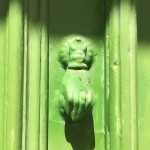


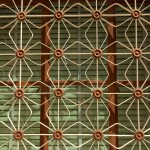

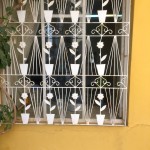


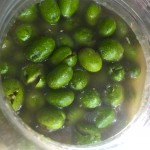 Our evening meal was prepared for us by our second host, Panayiota Demetriou local resident of the neighbouring village of Kato Drys. We observed the lighting of the customary Cyprus outdoor oven, a selection of dishes including tavas was put in & the domed oven was then sealed with clay for several hours of slow cooking. The results were delicious & served us well as a welcoming feast.
Our evening meal was prepared for us by our second host, Panayiota Demetriou local resident of the neighbouring village of Kato Drys. We observed the lighting of the customary Cyprus outdoor oven, a selection of dishes including tavas was put in & the domed oven was then sealed with clay for several hours of slow cooking. The results were delicious & served us well as a welcoming feast.
